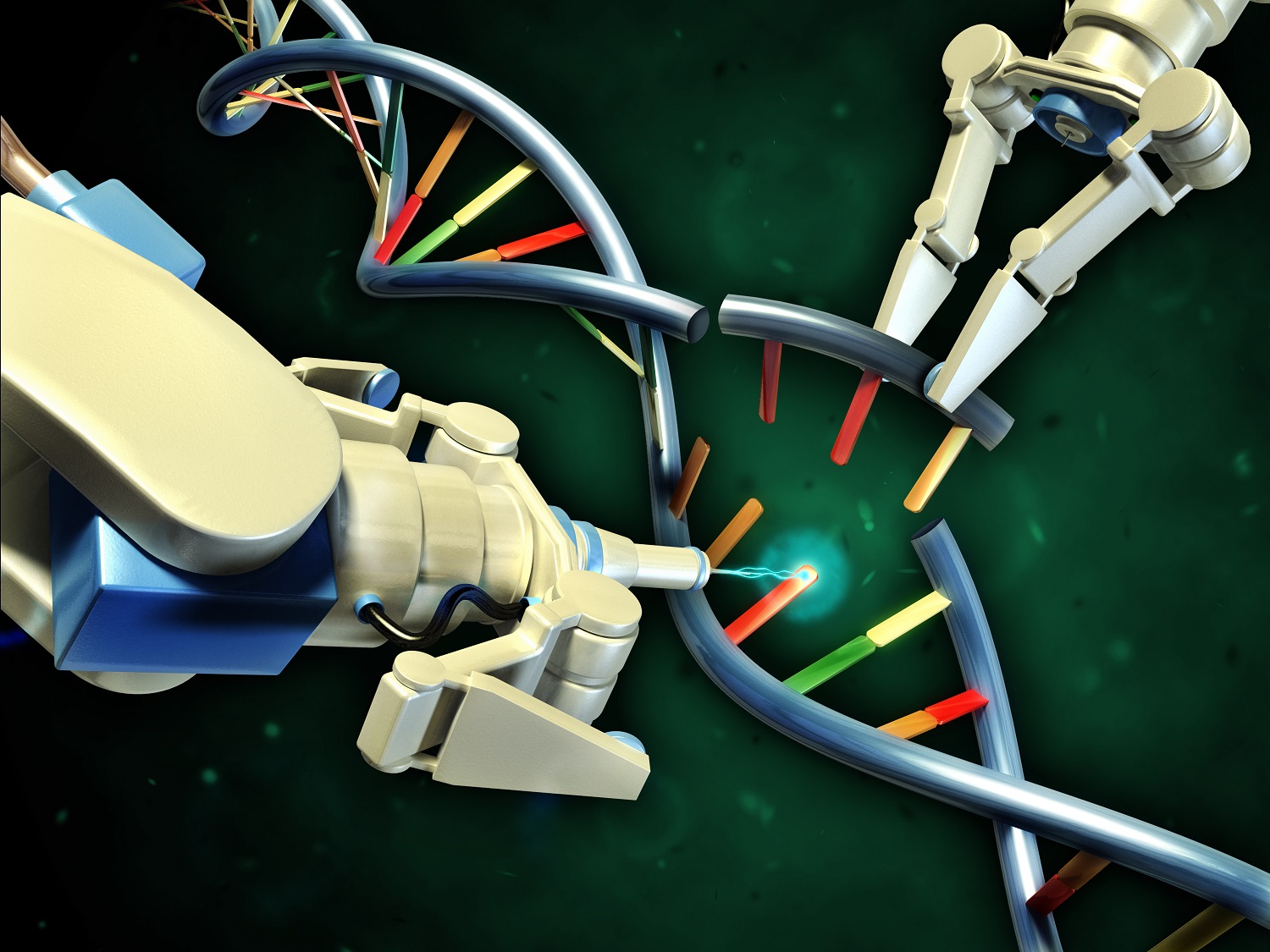
Over the last decade or so, the new science of epigenetics[1] has swiftly and furtively been reformulating the nature-nurture debate to ascribe with the revolutionary discovery that enucleated cells, in other words cells robbed of the nucleus and the genetic material inside, do not suffer immediate death but continue to survive performing the same biochemical functions for months on end. What might this imply other than the fact that the nucleus serves a reproductive function by allowing cell replication through mitosis? This is a far cry from being masterminds of cellular operations themselves, something that geneticists sympathetic to Darwinian natural selection had initially surmised. Inevitably, the displacement of absolute control over individual cell fate away from genetic determinism has inadvertently thrown another spanner in the works–if genetic footprints only marginally influenced the manner in which chemical processes mediated human life, then what other entities might be involved?
The answer became evident when the molecular mechanism of action underlying DNA replication was finally scrutinized. After a few decades of erroneous and zealous fixation upon DNA,[2] scientists broadened their experimental searches enough to see that DNA sequences inside cells were actually sheathed by chromosomal proteins. The cell cannot “read” and transliterate gene sequences unless the bound chromosomal protein decouples from the DNA’s double helix, a process which involves rudimentary alterations in the morphology of the former. As the scientists found out, the provisional separation of ensleeving proteins from their DNA double helices is initiated and controlled exclusively by the environment. Though inherited from our parents as physical memories of past learned experiences, it appears that genotypes are dynamic and multifactorial systems of information–they can be modified by environmental factors like chronic stress and emotional intelligence, nutrition, and general lifestyle. Contrary to what you were taught at school, you are not a slave to your genes!
The following example should illuminate the nature-nurture relationship in a much more lucid fashion. Let’s suppose, for argument’s sake, that I am an individual of resilient character and insurmountable will. There’s nothing in the world that frightens or disconcerts me, nothing able to obvert my deep-seated conviction that I am the sole master of my fate. I genuinely believe in the creative and life-altering powers of my own mind. Through no culpability of my own, there comes a time in my 50s when I develop a cancerous tumour in my prostate gland. Is there a chance, however minute, of positively influencing my own prognosis? Apparently so.
Irrespective of their particular specialization, cells comprising our physical bodies are lined with innumerable sense modalities on the surface of their membranes called receptors. Receptors are of specific shape and act like little antenna, screening extracellular space for signals compatible with their chemical composition. When a particular molecule [also known as a ligand] complements a receptor, it binds to the site and inaugurates a temporary transformation in the latter’s shape, allowing messages to be passed into the nucleus of the cell. The technical term for this is signal transduction. Any message streaming through might carry instructions for the replication of specific sequences of nucleotides responsible for protein synthesis, which will either initiation or inhibit mitotic division, open or close ionic gates, dictate movement at a cellular level, or manipulate amino acids into energetic chemical groupings like neurotransmitters, steroids, and peptides. While constructive interference depends upon the biochemical mobilization of regulatory proteins to expose the cell’s long-term memory, the DNA, so that it may be copied by its active memory, the RNA, the much more vital question of which gene sequences are actually copied and how the entire process might be activated remains with the extracellular signal, the environment. In a scientific paper of 1990 entitled, “Metaphors and the Role of Genes and Development,” H. Frederick Nijhout penned the epigenetic reality most eloquently, the idea that the environment plays an equally important role in the expression of phenotype, when he said: “When a gene product is needed, a signal from the environment, not an emergent property of the gene itself, activates expression of that gene.”
The postmodern shift to a universe conceptualized as a nonphysical continuum of energy made up of entangled frequency-like fields with holistic pathways of action has been the reason for current biomedicine with its dogged insistence on Newtonian mechanics to come under severe scrutiny. If healing were, really a linear process embodied exclusively by physical-based elemental particles, then there would be no way that the placebo-nocebo phenomenon, spontaneous remissions, expectancy effects, and other ‘anomalous’ incidences could ever come to pass. These suggest that pathways of information in biological systems are at the very least bidirectional and involve dynamic interactions between multiple frequencies, the dense molecular forms and the nonphysical energies-molecular vehicles and thought.
What’s more, rational sensibility would suggest molecules and receptor antenna on cell membranes cannot twist and change shape of their own consensus and volition, unless of course there is an imperceptible, frequency-like mechanism at work which enables them to do so. Spanning the known width of the electromagnetic wave spectrum, these mechanisms can be anything from gamma rays, x-rays, ultraviolet light, visible light, and infrared to heat waves, short-radio waves, and long-radio waves. Biosystems research has shown us that human thought is also part of that energy continuum able to motivate constructive or destructive interference in biochemical reactions via signal transduction.[3] The crux of the epigenetic argument is that by confabulating a positively-charged inner harmony through my cognitive and emotional faculties, I can manipulate the expression of nucleotide sequences inside my own cells which inhibits the abnormal biochemical mechanisms responsible for tumour development, thus drastically altering the outcome of my prognosis. According to epigenetic science, we are directly responsible for our own health, fecundity, and spiritedness.
The best possible way of adjudicating whether the new epigenetic paradigm is empirical valid or not is to look at double and triple bind experiments with randomized design that have attempted to quantify premeditated mental concentration like positive prayer and thinking in groups upon somatic response to infection, wounding, and coronary circulation. Moving into conceptual territory far beyond mind-brain holism, the forthcoming healing studies offer convincing evidence in support of the heretical ontology whereby all evolving mind-brain systems are entangled in a multidimensional environment known as the universe. As ludicrous as it may sound, it is very possible for raw nonphysical energies or thoughts of the same vibrational frequency or quality (i.e. positive thinking, empathy, love) to fashion themselves into a consensus environment or what I would call a collective thought form and then change or restructure nonconsensus physical environments like molecules and biochemical vehicles through nonlocal channels. The prevailing nonphysical and impersonal energy yielded by like-minded members of the expansive social synapse either influence personal energies or the denser biological forms representing their supplementary transfer-and-storage extensions. The studies are an ode to the belief that everything is interconnected.
Conducted in the 1980s, the first of these ambitious experiments examined the role of prayer on patients in need of coronary care and involved three hundred and ninety-three patients, a considerable number for any prospective study. One hundred and ninety-two of them were randomized into an experimenter group and the rest into a control group, with the former receiving long-distance prescriptions of prayer from affiliates of the Catholic and Protestant churches. Scrutinization of clinical notes revealed that there were common medical denominators linking the participants, meaning that severity levels of the ailment, its known time length, symptomologies, and the prescribed medications were comparable across the full band of participants prior to their experimental engagement. Byrd, the experimenter, compared the two groups following the allotted set of treatments and discovered that patients in the treatment group had benefitted somewhat from the long-distance prayer. In all, the prevalence of detrimental epiphenomena like congestive heart failure, cardiac arrest, and pneumonia was lower in prayer patients (p<.03, p<.02, and p<.03 respectively) which naturally meant that they were less likely to necessitate the assistance of artificial ventilators (p<.002), antibiotics (p<.005), or diuretics (p<.05).[4]
Later, a researcher by the name of Daniel Worth used the same rigorous protocols as Byrd in designing at experiment that would examine the tangible effect of therapeutic touch on biopsy wounding. The empirical worth of Worth’s methodology was amplified with the deliberate use of deception so that participants remained ignorant of the fundamental nature of the study, thus thwarting external variables over which the experimenter has no control over like the placebo effect. Again the study yielded significant results, with the experimental group displaying a statistically verifiable increase in the rate of healing roughly eight days after being punctured (p<.001). Consequently, the majority of patients in the experimental group returned to healthy functioning much faster than those in the control group and were completely healed by the sixteen day mark (p<.001).[5] Worth’s significant findings seem to vouch for the idea that nonphysical mechanisms other than the placebo phenomenon play a role in anomalous healing.
A third experiment investigating the effect of distant healing on individuals with HIV infection was conducted in San Francisco, CA. To strengthen the quality of the experimental design and eradicate possible compromise by way of observer and subject-expectancy effects, the patients, doctors, and research associates were kept in the dark as to which groups each participant was assigned to. Initially all prospective volunteers underwent stringent clinical assessments involving blood and psychometric tests, enabling research staff to pair match according to vital variables like illness phase, nutrition, and general lifestyle. They were then randomly separated into experimental and control groups, with the former receiving a well-rounded prescription of distance healing and clinical care. In contrast the controls only received conventional medical care, as is the norm in the industrialized West. The experimental trials lasted ten weeks. When the progress of the two groups was amalgamated into a blind medical chart, it became apparent that AIDS-related conditions, ailment severity, the frequency of required medical attention, the frequency and number of hospitalizations, and the experience of undesirable emotions were all statistically lower in the experimenter group (p=0.04, p=0.03, p=0.01, p=0.04, p=0.04, and p=0.02).[6] Despite these heartening developments, the tangible markers of HIV progression, that is, the CD4 and T lymphocyte counts per cubic millimetre of human blood, remained statistically insignificant throughout the duration of the study.
The outwardly absurd idea that perceptions and premeditated thoughts can regulate biology will eventually be accepted as epigenetics, the objective study of how the environment interfaces with the genotype to determine the expression of one’s phenotype, continues to gain ground in the scientific arena. Soon, the theoretical frontiers of conventional science will expand in ways that will allow mainstream scientists to openly concern themselves with empirical studies in mind-matter interaction and freely speculate on nonphysical avenues of healing without having to face the contempt, ridicule, and wrath of their more rigid, conservative peers. The future is not about being the actor dictated to by the spiritual winds; it is about being the playwright masterminding the individual scenes and subsequently switching acting roles to ensure that the entire narrative gets played out in consensual reality. We are the divinities we dream and seek, the divinities we have awaited…
[1] The field of biology concerned with the selection, modification, and regulation of an organism’s genetic information by the environment.
[2] Short for Deoxyribonucleic acid, DNA is a molecule encompassing instructions which outline the development and functioning of all living systems.
[3] Bruce H. Lipton, The Biology of Belief: Unleashing the Power of Consciousness, Matter & Miracles (New York City, NY: Hay House Inc., 2008), pp. 81.
[4] Pamela Rae Health, Mind-Matter Interaction: A Review of Historical Reports, Theory and Research (Jefferson, North Carolina: McFarland & Company, 2011), pp. 106.
[5] Ibid, 106.
[6] Ibid, pp. 107.









